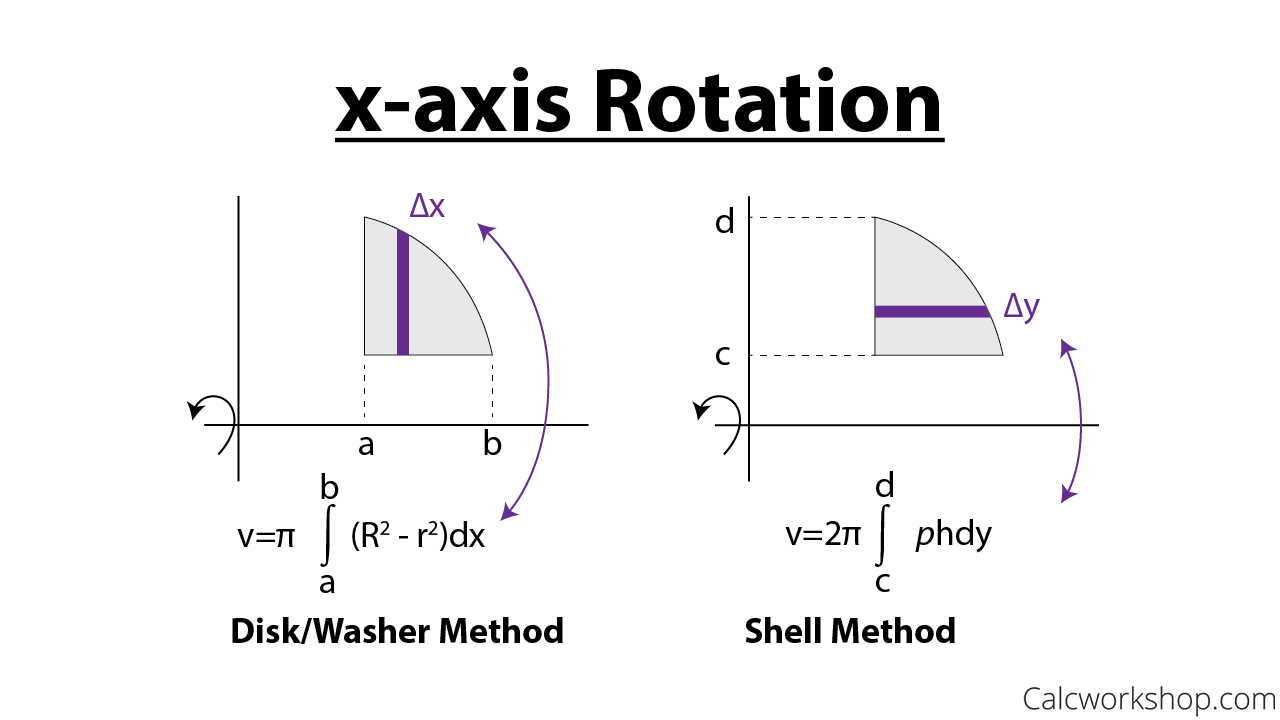









Called Solids of revolution because they are obtained by revolving a region about a line. In general, we calculate the volume of a solid of revolution by using the basic defining formula


We find the cross-sectional area \(A(x)\) or \(A(y)\) in one of the following ways:








For the disk/washer method, the slice is perpendicular to the axis of revolution, whereas, for the shell method, the slice is parallel to the axis of revolution.


There are a couple of important differences between this method and the method of rings/disks that we should note before moving on. First, rotation about a vertical axis (i.e. \(y=n\)) will give an area that is a function of \(x\) and rotation about a horizontal axis (i.e. \(x=k\)) will give an area that is a function of \(y\). This is exactly opposite of the method of rings/disks. Second, we don’t take the complete range of x or y for the limits of integration as we did in the previous section. Instead we take a range of x or y that will cover one side of the solid. As we noted in the first example if we expand out the radius to cover one side we will automatically expand in the other direction as well to cover the other side.
